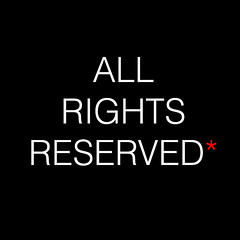
I’ve always known there were ways to work with copyrights to obtain the information/work you wish to use, but after reading the articles and watching the video it has become obvious that there may be more ways around the vicious copyright laws.
What surprised me?
The one thing that surprised me most was in the YouTube video “A Fair(y) Use Tale” where they took clips from Disney movies in order to get the point across that since the clips were so short and were used for education purposes Disney is unable to get them for copyright infringement.
 What empowered me?
What empowered me?
One thing that empowered me was after watching the video when I learned that all of the video was movie clips and Disney was unable to come after them legally. Another empowering moment was when I learned about the fair use part of a copyright and creative commons. The fair use and creative commons allows people to use pieces of work in order to recreate newer pieces or to teach about a subject. Fair use and creative commons allows society to grow and continue to improve. Without them there may not have been another piece of art created, book written, movie developed, or lecture conducted.
what frustrated me?
The most frustrating fact about copyright is the time which it is active. I knew that a piece of work could be copyright for many years, but I was unaware that come copyrights last much longer than that. Although the time period in which a copyright is active can be long it is reassuring knowing that once the copyright runs out it goes into the public domain and it can never be taken out of the domain once it has entered.
examples:
I was required to write an argument paper for an English course which required me to research and use statistics from articles. When it came to using the statistics from the articles I had to be sure that I used quotations when needed and cited the source correctly at the end of the paper.
A more recent example is from this class where I was introduced to creative commons. I recently used Flickr to find photos that had creative commons licenses to use in my blog. Once I found the photo I just had to be sure to give credit to the publisher/photographer.
articles/video:
Faden, Eric. “A Fair(y) Use Tale.” YouTube. Web. 06 Sept. 2012
